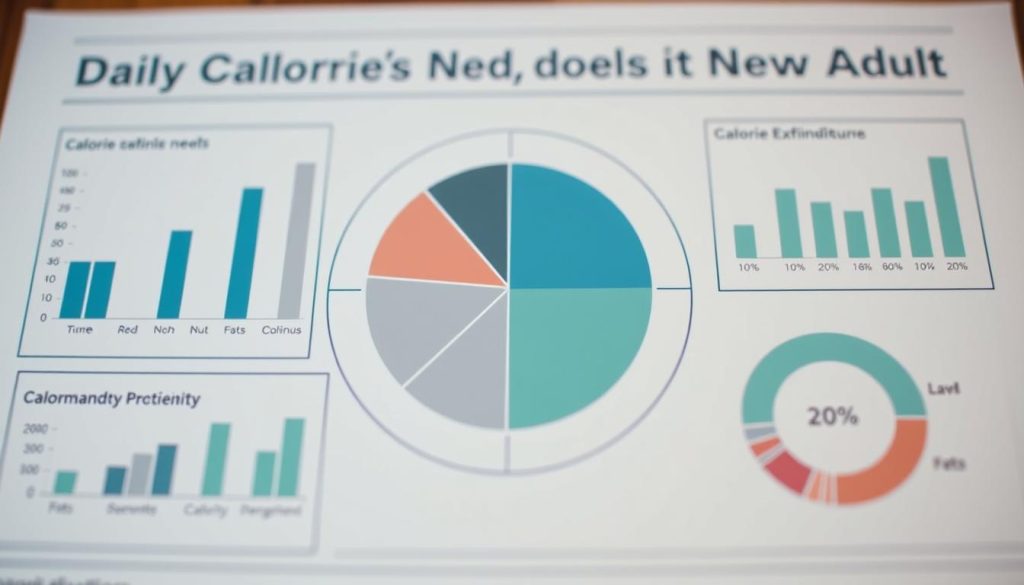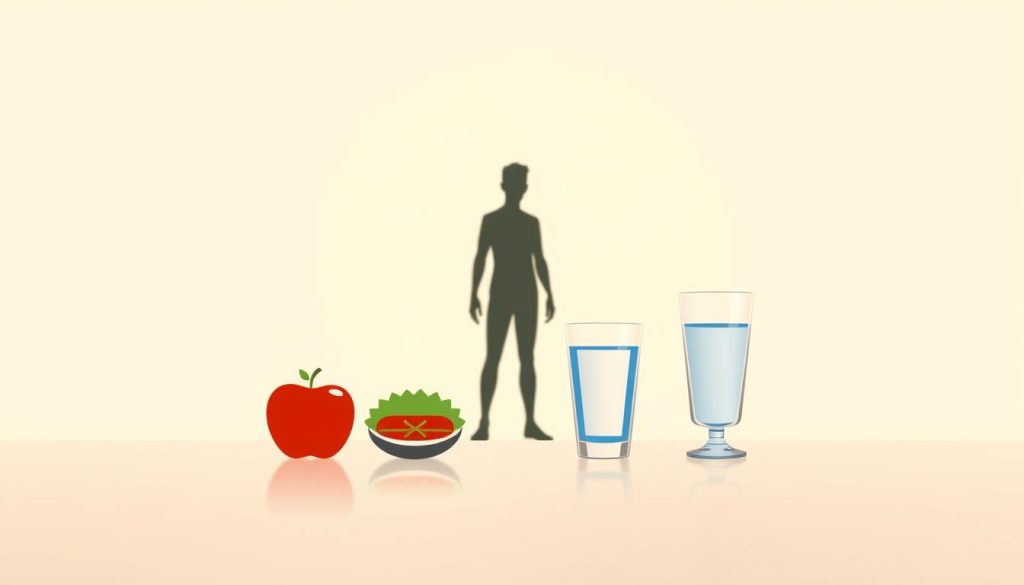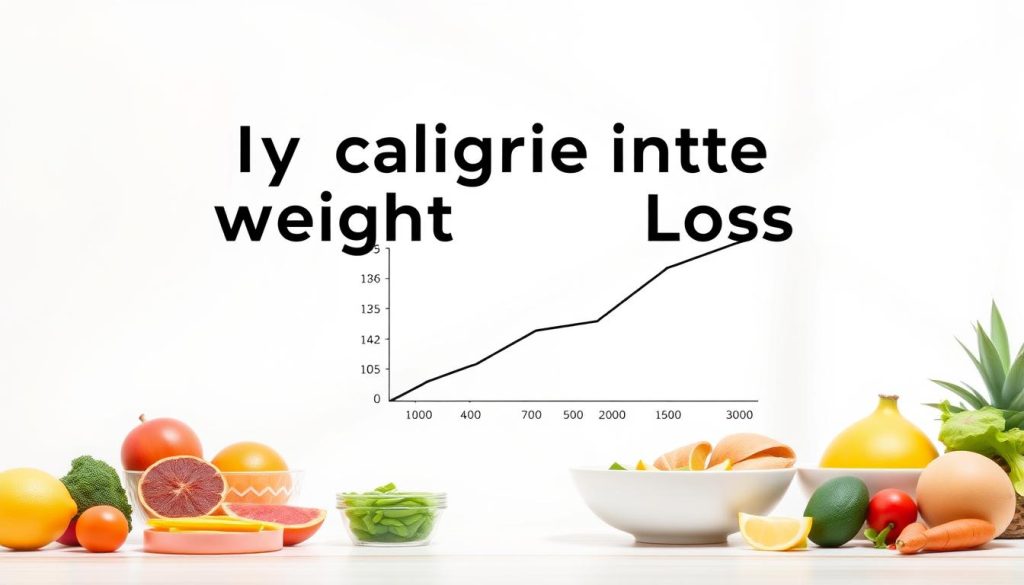Determining the right daily calorie intake for weight loss can feel overwhelming. Factors like age, sex, activity level, and body size all play a role. The CDC recommends aiming for a sustainable loss of 1-2 pounds per week. This approach helps maintain long-term health and avoid extreme measures.
A calorie deficit is key to shedding fat. Tools like the Mifflin-St. Jeor equation and Dietary Guidelines tables can help calculate your needs. However, dropping below 1,200 calories for women or 1,800 for men can harm your health.
Pairing proper nutrition with regular exercise yields the best results. Programs like Wellos, in partnership with RVO Health, offer support for healthy weight loss. Remember, balance is essential for lasting success.
Key Takeaways
- Daily calorie needs depend on age, sex, activity level, and body size.
- Aim for 1-2 pounds of weight loss per week for sustainability.
- Calorie deficits are crucial for fat loss.
- Use tools like the Mifflin-St. Jeor equation for accurate calculations.
- Avoid extreme calorie restriction to protect your health.
- Combine nutrition and exercise for optimal results.
Understanding Calories and Weight Loss
Calories are the building blocks of energy in our daily lives. They measure the energy content in food and beverages, fueling everything the body does. Whether you’re walking, thinking, or even sleeping, calories keep you going.
To shed fat, a calorie deficit is essential. Research shows that a 3,500-calorie deficit typically leads to losing one pound of fat. However, this principle is influenced by factors like genetics, hormones, and even medications. For example, beta-blockers can reduce metabolism by 5-15%, making weight loss more challenging.
The “calories in vs. calories out” principle remains a cornerstone of fat loss. Yet, modern science adds nuance. Metabolism slows by 2-3% each decade after age 20, and Non-Exercise Activity Thermogenesis (NEAT)—like fidgeting or standing—can significantly impact energy expenditure.
Set-Point Theory suggests the body resists significant changes in weight, often leading to plateaus. A 2023 JAMA study highlights the long-term challenges of maintaining weight loss, emphasizing the need for sustainable strategies.
“Sustainable weight management requires understanding both the science and the individual factors at play.”
By focusing on balanced nutrition, regular activity, and personalized approaches, you can achieve your health goals without extreme measures.
How to Calculate Your Daily Calorie Needs

Understanding your daily calorie needs is the first step toward achieving your health goals. Whether you’re planning meals or setting fitness targets, knowing your body’s energy requirements is essential. Factors like age, gender, activity level, and body weight all influence your calorie intake.
Using the Mifflin-St. Jeor Equation
The Mifflin-St. Jeor equation is a reliable method to estimate your calorie intake. It considers your weight, height, age, and gender. Here’s how it works:
- For men: (10 × weight in kg) + (6.25 × height in cm) – (5 × age) + 5
- For women: (10 × weight in kg) + (6.25 × height in cm) – (5 × age) – 161
For example, a 35-year-old woman weighing 68 kg and 165 cm tall would calculate her needs as follows: (10 × 68) + (6.25 × 165) – (5 × 35) – 161 = 1,367 calories. Multiply this by an activity factor (e.g., 1.55 for moderate activity) to find her Total Daily Energy Expenditure (TDEE).
Calorie Needs by Age and Gender
Your current weight and lifestyle also play a role in determining your calorie needs. Below is a table summarizing average daily calorie requirements by age and gender:
| Age Group | Men (Calories) | Women (Calories) |
|---|---|---|
| 19-30 | 2,400-3,000 | 1,800-2,400 |
| 31-50 | 2,200-3,000 | 1,800-2,200 |
| 51+ | 2,000-2,800 | 1,600-2,200 |
Keep in mind, these are general guidelines. Individual needs may vary based on activity level and metabolism. Tools like the Navy Body Fat Calculator can provide additional insights into your calorie intake requirements.
Understanding your TDEE and how it changes during weight loss is crucial. As you lose weight, your metabolism adapts, and your calorie needs may decrease. Regular reassessment ensures you stay on track toward your goals.
Creating a Calorie Deficit for Weight Loss

Balancing fewer calories with activity is a proven strategy for fat loss. A daily deficit of 500-1,000 calories typically results in losing 1-2 pounds per week. This approach is sustainable and supports long-term health.
There are three main ways to create a calorie deficit: diet-only, exercise-only, or a combined approach. A diet-only plan focuses on reducing food intake, while exercise-only relies on burning extra calories through activity. Combining both methods often yields the best results.
Adaptive thermogenesis, often called “starvation mode,” is a common concern. While the body does slow metabolism during prolonged deficits, extreme measures are rarely necessary. A 2022 Obesity study highlights the benefits of protein pacing, which preserves muscle mass during weight loss.
“Protein pacing helps maintain lean muscle while promoting fat loss, making it a key component of sustainable weight management.”
To avoid plateaus, consider incorporating diet breaks. Spending 2 weeks at maintenance calories every 8-12 weeks can help reset your metabolism. Apps like MyFitnessPal and LoseIt simplify tracking, but avoid deficits exceeding 25% of your Total Daily Energy Expenditure (TDEE).
Non-Exercise Activity Thermogenesis (NEAT) accounts for 15-50% of daily energy expenditure. Simple changes like standing more or taking short walks can add up. For example, a 500-calorie deficit equals about one hour of swimming or 10,000 steps.
By focusing on a balanced plan and giving your body time to adapt, you can achieve your goals without extreme measures. Remember, consistency is key to lasting success.
Strategies to Reduce Calorie Intake
Reducing calorie intake doesn’t have to feel restrictive or overwhelming. By making small, strategic changes to your diet and lifestyle, you can achieve your goals while still enjoying your favorite foods. Here are some proven methods to help you cut calories effectively.
Eat More Protein
Protein is a powerful tool for reducing calorie intake. It increases thermogenesis by 15-30%, compared to just 5-10% for carbs. This means your body burns more energy digesting protein-rich foods. According to ISSN guidelines, aim for 1.6-2.2 grams of protein per kilogram of body weight for optimal results.
Limit Sugary Drinks
Sugary drinks like soda are high in empty calories and don’t trigger satiety hormones like CCK or GLP-1. For example, a 20-ounce soda contains 240 calories, while a zero-calorie alternative like LaCroix offers the same refreshment without the added sugar. Cutting out sugary drinks is an easy way to reduce your daily calorie intake.
Drink More Water
Staying hydrated can naturally curb your appetite. A Virginia Tech study found that drinking 16 ounces of water before meals reduced calorie intake by 13%. Proper hydration also supports electrolyte balance, which can reduce water retention and body fat.
Exercise Regularly
Physical activity is essential for creating a calorie deficit. High-Intensity Interval Training (HIIT) burns more calories in less time compared to steady-state cardio. For example, a 30-minute HIIT session can burn up to 400 calories, while a brisk walk burns around 200. Regular exercise not only helps you lose weight but also improves overall health.
Reduce Refined Carbs and Ultra-Processed Foods
Refined carbs like white bread and pasta have a high glycemic load, which can spike hunger and lead to overeating. Ultra-processed foods, such as breakfast cereals and packaged snacks, are often calorie-dense and low in nutrients. Focus on whole, minimally processed options to help lose weight sustainably.
7-Day Sample Meal Plan (1,600 Calories)
| Day | Breakfast | Lunch | Dinner |
|---|---|---|---|
| Monday | Greek yogurt with berries | Grilled chicken salad | Baked salmon with quinoa |
| Tuesday | Oatmeal with almond butter | Turkey and avocado wrap | Stir-fried tofu with veggies |
| Wednesday | Smoothie with spinach and protein powder | Quinoa and black bean bowl | Grilled shrimp with asparagus |
| Thursday | Scrambled eggs with veggies | Lentil soup with whole-grain bread | Chicken stir-fry with brown rice |
| Friday | Chia pudding with fruit | Grilled chicken Caesar salad | Baked cod with sweet potatoes |
| Saturday | Whole-grain toast with avocado | Turkey burger with side salad | Beef and broccoli stir-fry |
| Sunday | Protein pancakes with syrup | Grilled salmon with quinoa | Vegetable curry with chickpeas |
Ultra-Processed Foods to Avoid
- Breakfast cereals
- Packaged snacks (chips, cookies)
- Sugary drinks (soda, energy drinks)
- Frozen meals
- Instant noodles
- Processed meats (sausages, hot dogs)
- Fast food
- Flavored yogurts
- Granola bars
- Pre-made sauces and dressings
- White bread
- Pastries and donuts
- Microwave popcorn
- Candy
- Ice cream
By incorporating these strategies into your daily routine, you can reduce calorie intake without feeling deprived. Focus on nutrient-dense foods, stay active, and make mindful choices to support your diet and exercise goals.
Practical Tips for Sustainable Weight Loss
Achieving sustainable weight loss requires practical, everyday strategies. Small changes in your routine can make a big difference over time. Here are some effective ways to stay on track and maintain your progress.
Mindful eating is a powerful tool. A Harvard study found it reduces binge episodes by 38%. Focus on savoring each bite and listening to your body’s hunger cues. This approach helps you enjoy food while avoiding overeating.
Meal prepping is another game-changer. Use glass containers like Pyrex or Snapware to store your meals. Preparing healthy snacks and meals in advance saves time and keeps you on track. Frozen vegetables are a great option—they retain 90% of their nutrients compared to fresh ones.
When grocery shopping, stick to the perimeter of the store. This is where you’ll find whole, unprocessed foods like fruits, vegetables, and lean proteins. Avoid the aisles filled with sugary snacks and processed items.
Here’s a simple table to help you plan your meals:
| Meal | Healthy Options |
|---|---|
| Breakfast | Greek yogurt with berries |
| Lunch | Grilled chicken salad |
| Dinner | Baked salmon with quinoa |
| Snacks | Apple slices with almond butter |
Social support can boost your success rates by 65%. Share your goals with friends or join a community for accountability. Apps like the NHS Weight Loss Plan provide step-by-step guidance and tracking tools.
Restaurant ordering doesn’t have to derail your progress. Opt for “protein-style” options, like lettuce wraps instead of buns. This simple hack keeps your meals balanced and satisfying.
Sleep and stress management are also crucial. Getting less than 7 hours of sleep increases ghrelin, the hunger hormone. High cortisol levels from stress can lead to weight gain. Prioritize rest and relaxation to support your goals.
By incorporating these practical tips into your routine, you can achieve sustainable weight loss without feeling overwhelmed. Consistency and balance are the keys to long-term success.
Potential Downsides of Counting Calories
While counting calories can be helpful, it’s not without its drawbacks. For some, it can lead to an unhealthy obsession with numbers, overshadowing the joy of eating. Research shows that 23% of calorie counters develop orthorexic tendencies, focusing excessively on “clean” eating.
Trackers often underestimate intake by 20-30%, according to an AJCN study. This can create a false sense of progress and lead to nutrient deficiencies. For example, low-calorie diets often lack essential fatty acids, which the body needs 12-17 grams of daily.
RED-S (Relative Energy Deficiency in Sport) is another concern. It occurs when energy intake doesn’t meet the body’s needs, affecting performance and health. Symptoms include fatigue, weakened immunity, and hormonal imbalances.
Here’s a table of micronutrients often deficient in low-calorie diets:
| Nutrient | Function | Common Sources |
|---|---|---|
| Iron | Oxygen transport | Spinach, red meat |
| Vitamin D | Bone health | Sunlight, fatty fish |
| Magnesium | Muscle function | Nuts, seeds |
| Omega-3s | Brain health | Salmon, flaxseeds |
Intuitive eating, which focuses on listening to your body’s hunger cues, often yields better long-term outcomes than strict tracking. A 2022 study found that intuitive eaters had lower rates of eating disorders and better mental health.
Warning signs of disordered eating include constant preoccupation with foods, guilt after eating, and avoiding social events involving meals. These behaviors can strain relationships and harm mental well-being.
“Recovery from tracking addiction involves rebuilding trust in your body’s natural signals.”
Alternatives like the hand-portion method, popularized by Precision Nutrition, offer a simpler approach. For example, a serving of protein is about the size of your palm, while carbs fit in your cupped hand.
Consider the case of Sarah, who recovered from tracking addiction by focusing on balanced meals and mindful eating. Her story highlights the importance of flexibility and self-compassion in achieving sustainable health goals.
Conclusion
Sustainable weight management starts with understanding your unique needs. A daily deficit of 500 calories can help you lose 1-2 pounds per week, but individual factors like activity level and body composition play a role. Tools like DEXA scans provide deeper insights into your fat and muscle ratios.
For personalized guidance, consider working with a registered dietitian. They can tailor a diet plan to your lifestyle and goals. Programs like the NHS 12-week plan offer structured support for long-term success.
Even a 5% reduction in weight can improve health markers like blood pressure and cholesterol. Small, consistent changes make a big difference over time.
Ready to take the next step? Download our free calorie calculator PDF to track your progress and stay motivated on your journey to maintain weight loss.
FAQ
What is a calorie deficit, and why is it important for weight loss?
A calorie deficit occurs when you consume fewer calories than your body burns. This forces your body to use stored fat for energy, helping you shed pounds. It’s a key principle for effective and sustainable weight loss.
How can I calculate my daily calorie needs?
You can use the Mifflin-St. Jeor equation, which factors in your age, gender, weight, height, and activity level. This formula provides a personalized estimate of how much energy your body requires daily.
Does age or gender affect calorie requirements?
Yes, both age and gender play a role. Men typically need more calories than women due to higher muscle mass, and calorie needs decrease with age as metabolism slows down.
What are some easy ways to reduce calorie intake?
Focus on eating more protein, drinking water instead of sugary beverages, and cutting back on refined carbs and ultra-processed foods. These small changes can make a big difference over time.
Can exercise help with weight loss?
Absolutely! Regular physical activity boosts calorie burn and supports overall health. Combining exercise with a balanced diet is one of the most effective ways to achieve your goals.
Are there any downsides to counting calories?
While it can be helpful, calorie counting may lead to obsessive behaviors or stress for some people. It’s important to focus on overall health and not just numbers.
How can I make weight loss sustainable?
Adopt habits like mindful eating, choosing nutrient-dense foods, and setting realistic goals. Sustainability comes from creating a lifestyle you can maintain long-term.



